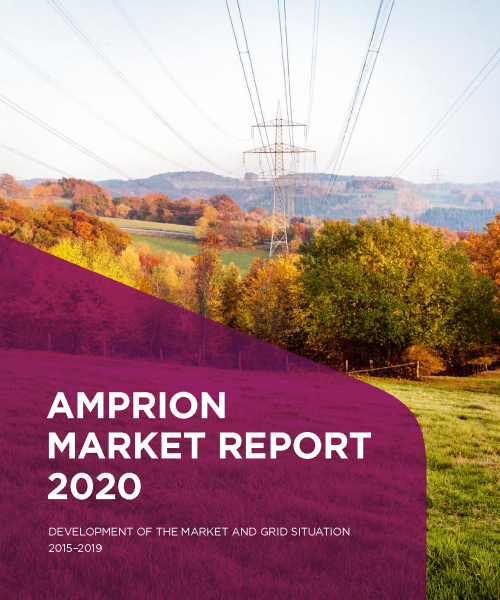Market Report 2020

Amprion has published its Market Report 2020, revealing how the electricity market in the Central Western Europe (CWE) region has developed between 2015 and 2019. It discloses that the transmission system operators were able to further reduce trade barriers in the European electricity market.
In this report, Amprion analyses the data from flow-based market coupling (FB MC). This method is used to make the exchange of electricity between the markets of the Central Western Europe (CWE) region efficient – this region taking in Belgium, Germany, France, Luxembourg, the Netherlands and Austria. In 2019, the TSOs succeeded in making sufficient power transmission capacity available during 42% of trading hours so that demand across the entire region could be met at fully converged prices (day-ahead market prices). This has increased price convergence significantly: in 2018, the figure was just 32%.
“The Market Report furnishes proof that trade barriers could be decreased during the course of 2019”, says Dr Hans-Jürgen Brick, chair of Amprion’s management board. This can be attributed to the high transmission capacity provided to the market, efficiency and close interconnection of the power grids within the CWE region. “They play a key role in ensuring Europe’s stable and secure energy system”, said Brick.
FEWER CONSTRAINTS IN THE AMPRION NETWORK
The Market Report also shows that the Dortmund-based TSO was able to further increase the efficiency of its grid and by doing so also boost Europe’s electricity market. Whereas in 2018 the share of internal trade constraints for which Amprion was responsible stood at 13.7%, in 2019 this figure was just 7.8%. In addition to ongoing grid expansion measures, this can be put down to what’s known as “Dynamic Line Rating” – a measure that allows key transmission lines to be utilised more efficiently depending on the weather.
All in all, Amprion’s analyses show that cross-border electricity trading has continued to grow in importance. While the demand for transmission capacity in summer can usually be met at European level, power consumption in the individual countries is higher in winter. This inhibits trade and the collective setting of prices. In the summer months of May, June and August 2019, Germany was for the first time a net importer of electricity. One of the reasons for this were the high carbon prices, which made the country’s coal-fired power plants less competitive.
| Year | Title | Download |
|---|---|---|
| 2020 | Market Report 2020 |
PDF [7.3 MB] |
